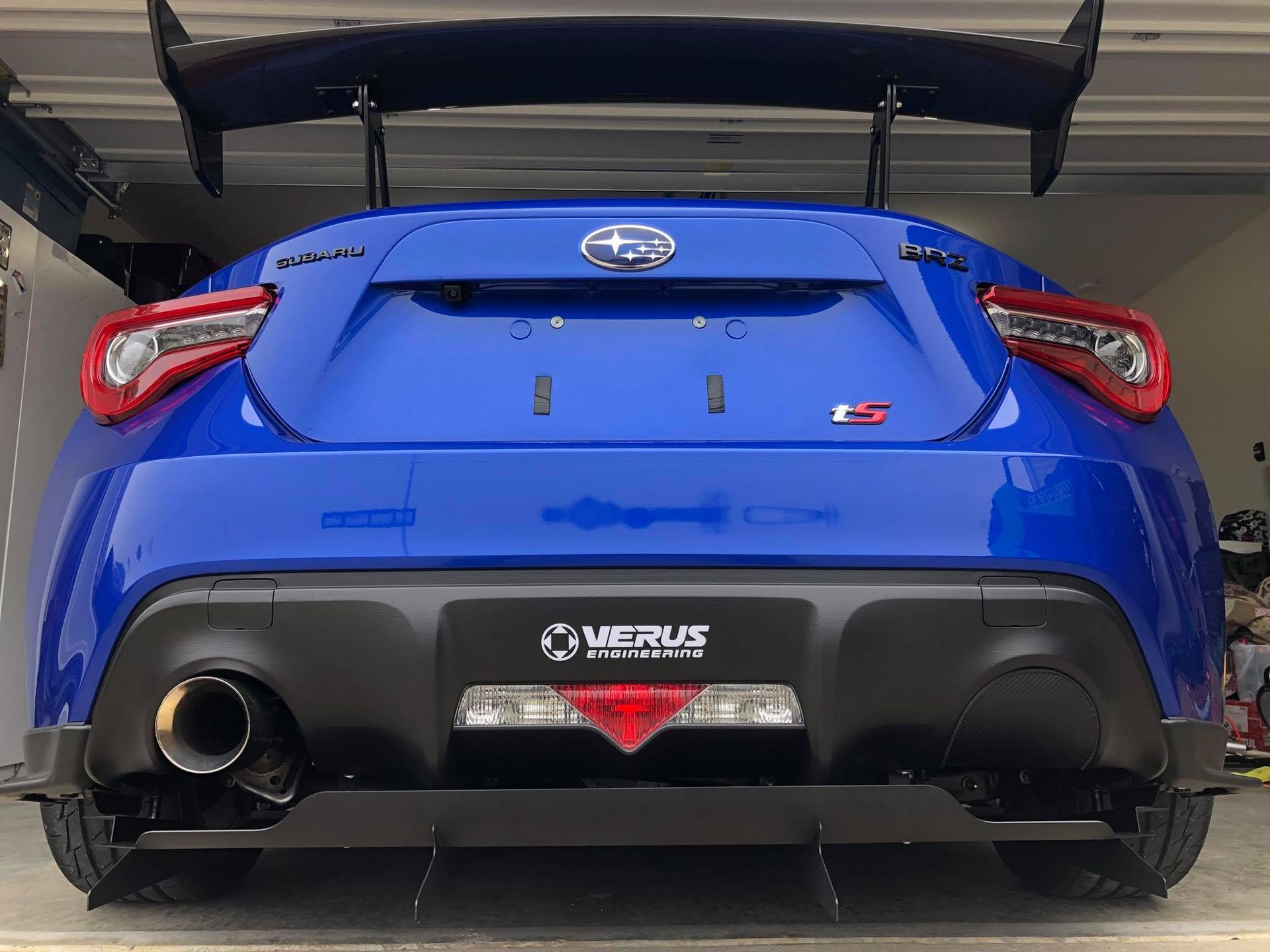As anyone can tell, aerodynamics plays a big part in your car's performance. You can get more downforce when you improve how your vehicle handles the airflow around it. This leads to improved tire grip, better handling, and an overall faster vehicle. But aerodynamics can bring an added bonus to everyday street driving you might have yet to think about. Learn how car aerodynamics affects fuel efficiency and see what high-performance parts you can install to boost your vehicle’s speed, handling, and even mileage.
Reduced Drag Equates to Better Mileage

A rear diffuser like this one on a Subaru BRZ can help reduce aerodynamic drag.
There’s a reason why auto manufacturers have their own wind tunnels and teams of aerodynamic experts. Car aerodynamics are critical in vehicle design for speed and style and to reduce drag for improved fuel efficiency. The following variables are typically considered when determining a vehicle's aerodynamic prowess.
- Drag coefficient (Cd): This number signifies how easily a vehicle moves through the air. Generally, the lower your drag coefficient, the more fuel-efficient your vehicle will be. There are now many factory cars with drag coefficients under .30. SUVs will be higher, commonly in the .35 to .40 range, and trucks will typically be over .40.
- Frontal area: In basic terms, this is the width x height when looking at the front of a vehicle. It’s typically measured in square feet or meters. You can get an approximation by taking the basic measurement of area and multiplying it by .85 to account for the car’s rounded corners and open space between wheels.
- Drag area: This is a leading measurement of car aerodynamics. You get the total when multiplying the drag coefficient by the frontal area.
As expected, smaller, more aerodynamically designed cars will have much lower total drag areas than SUVs and trucks, thus better fuel efficiency. That said, there's more of an emphasis than ever on making all types of vehicles more aerodynamic to enhance mileage.
Balancing Car Aerodynamics For Performance Applications
Dive planes like the ones on this Ford Mustang Shelby GT350 will help you achieve the right aerodynamic balance.
When focused on performance, you're more concerned about straight-line and cornering speeds than fuel efficiency. But that doesn't mean you have to throw efficiency out the window. One of the keys is finding the right balance. For example, you will need front-end components like a splitter and dive planes to offset an aggressive rear wing.
Working with a performance parts designer who understands all aspects of car aerodynamics and knows what you need to ensure the proper balance is essential. In the end, adding performance parts like a rear diffuser not only helps with reduced lift and improved downforce but also with your fuel efficiency during everyday driving.
Find Aerodynamic Performance Parts From Verus Engineering
Turn to the experts at Verus Engineering for the latest in aerodynamic performance parts. We emphasize proper design, testing, and analysis to make sure you get the best for your vehicle. Shop online today and browse our impressive selection of rear diffusers, splitters, wings, dive planes, and more.
How Does Car Aerodynamics Affect Fuel Efficiency?